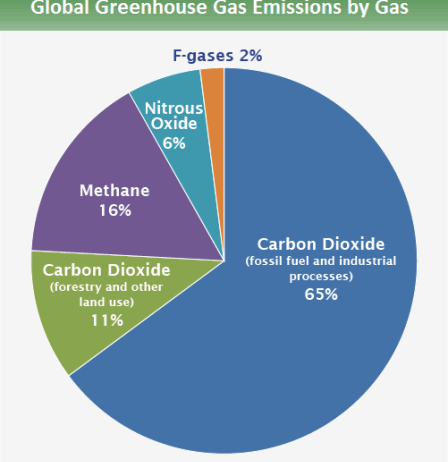The phenomenon of global warming, a pressing issue of our time, is often perceived through the proverbial lens of carbon dioxide emissions from fossil fuels. However, a less conspicuous yet equally pernicious category of greenhouse gases—fluorinated gases—warrants rigorous scrutiny. These synthetic compounds, while less abundant in the atmosphere, possess an astounding capacity to entrap heat—far exceeding that of carbon dioxide. Their impact on our climate is insidious and multifaceted, warranting a comprehensive examination of their role in the global warming crisis.
Fluorinated gases include a diverse array of chemical substances, such as hydrofluorocarbons (HFCs), perfluorocarbons (PFCs), sulfur hexafluoride (SF6), and nitrogen trifluoride (NF3). These compounds are predominantly utilized in industrial applications and consumer products, ranging from refrigeration to aerosol propellants. Their structure is characterized by carbon-fluorine bonds, which are exceptionally strong. This durability is a double-edged sword; it empowers fluorinated gases to persist in the atmosphere for extended periods, sometimes spanning thousands of years, thus exacerbating their cumulative effect on the climate.
What sets fluorinated gases apart from more commonplace greenhouse gases is their global warming potential (GWP). For instance, HFCs can have GWP values thousands of times greater than that of carbon dioxide over a century. This statistic illuminates a critical aspect of the climate change narrative: while reductions in carbon emissions are crucial, neglecting the impact of fluorinated gases undermines overall efforts to mitigate climate change. The alarmingly high GWP of these gases renders them potent accelerators of global warming, even in minute quantities.
The primary drivers behind the proliferation of fluorinated gases are interconnected with modern consumerism and industrialization. Refrigeration systems, air conditioning units, and foam-blowing agents are focal points for HFC use. The global market for these products has burgeoned, with retailers and manufacturers favoring HFCs due to their efficiency in heat exchange applications. Despite the availability of greener alternatives, economic incentives often overshadow environmental considerations, leading to a precarious reliance on these harmful substances.
Further complicating the issue is the phenomenon of “leakage”. During production, application, and disposal of products containing fluorinated gases, leaks can occur, a process often unmonitored or underreported. The atmospheric release of these gases compounds their effects, as even small leaks can contribute significantly to global concentrations. Therefore, a dual approach emphasizing both reduction and leak prevention is essential for addressing the crisis posed by these compounds.
The regulatory landscape surrounding fluorinated gases has evolved, albeit slowly. International agreements have targeted their mitigation, most notably the Kigali Amendment to the Montreal Protocol. This landmark accord aims to phase down the production and consumption of HFCs globally. Participating nations have committed to ambitious reduction timelines, yet implementation remains a formidable challenge. National policies often lag behind the urgency of scientific recommendations, reflecting a disconnect between environmental imperatives and political will.
Moreover, the lack of public awareness regarding the dangers posed by fluorinated gases hampers collective action. While many individuals recognize the need to reduce carbon footprints, the discourse surrounding HFCs is less pronounced. Education is crucial; informing consumers about the environmental impact of their choices, especially when purchasing refrigeration or air conditioning systems, can catalyze demand for low-GWP alternatives.
In parallel, technological innovation is a necessary countermeasure against the deleterious effects of fluorinated gases. The development of alternative substances, such as natural refrigerants (e.g., hydrocarbons and ammonia), presents a feasible pathway to minimize reliance on HFCs. Furthermore, advancements in product design and engineering, focusing on energy efficiency and low-emission technologies, play a pivotal role in curbing emissions across various sectors, from manufacturing to energy production.
Ultimately, combating the existential threat of global warming necessitates a multifaceted approach where fluorinated gases cannot be overlooked. An integrated strategy that amalgamates regulatory reform, public education, and technological innovation is paramount. By crystallizing the complexity of the issues relating to fluorinated gases, the urgency of the matter becomes apparent. These compounds epitomize the complexity of modern industrial practices and their environmental repercussions. As society increasingly grapples with the implications of climate change, acknowledging the broader spectrum of greenhouse gases, including fluorinated gases, becomes imperative.
The plight of the planet hinges on decisive action. Addressing the emissions of fluorinated gases is not merely an environmental concern; it is a moral imperative. Stakeholders at every level—from policymakers to everyday consumers—must coalesce in efforts to understand, regulate, and mitigate the impact of these potent greenhouse gases. Only then can genuine progress be made in the global endeavor to secure a habitable planet for future generations.







